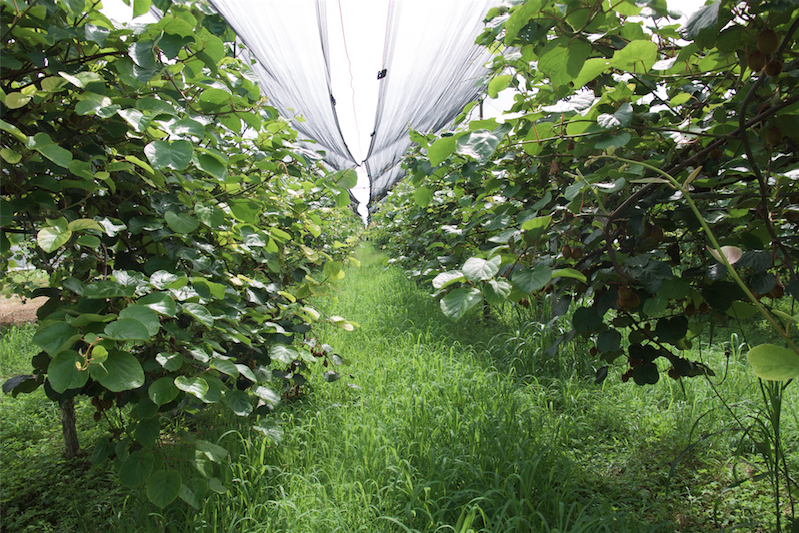Farm description
The Fontanabona farm is located in the Po’ Valley, a few kilometers far from Verona and the Pre-Alps. It is about 7 hectares wide. The Fontanabona family has been cultivating organically since 1982, but the field has the current characteristics since 1999.
About 4 hectares of the land are reserved for kiwi crops, while in the remaining part of the land horticultural products (such as lettuce, celery, cabbage and chard) are cultivated in greenhouse and in open field, under anti-hail nets.

Statement of the farmer
I want to be involved in SOLMACC project because I want to share knowledge and best practices at European level.
Currently, the farm is run by Paolo Fontanabona. His father, Giuseppe Fontanabona, was one of the first farmer contributing to the spread of the Organic Farming in Italy. He was convinced that only choosing organic farming could guarantee the respect for the simple things, the nature and the Earth. In 1989, he participated in the founding of the Agricultural Cooperative “La Primavera”, which now brings together 89 organic farms located mostly in Verona area (including also Fontanabona farm).
The Cooperative checks that the method of organic farming is rigorously applied in the various stages of the production by means of the periodic analysis of soil samples and products. A team of technical experts ensures the implementation of this control system, the assistance and training of all members of the Cooperative.
Climate friendly practices applied
1. Improved on-farm nutrient management
Improved composting of on-farm residues
The main focus of this farm is the fertilization strategy. Before the SOLMACC project, the farmer fertilized his vegetable crops once with animal manure (30 kg/ha) and a summer green manure every year. With the SOLMACC project, the farmer changed his practice, so that he applies now two times a year 20 kg of compost.
The compost, made from fresh farmyard manure from the area, is stored in 3 compost piles (1.5 x 30 m), first covered with hay, but now covered with a breathable cloth. The material to cover the compost was changed, because a high level of rain in the area may lead to the washing out of nutrients, if the compost is only covered with hay. The farmer does a biodynamic management of the piles.
First, the main problem was the absence of a regular turning of manure piles due to a lack of the specific machinery. To overcome this problem, the farmer bought a manure loader to turn the compost up to 3 times.
2. Optimised crop rotations with legumes
Increasing proportion of forage legumes
The farmer cultivates 3 ha vegetables in greenhouses close to his farm. Before the SOLMACC project, only haricot (Gartenbohne) was cultivated as a leguminous crop. With the SOLMACC project, the farmer started green manure cultivation on half of the area with cowpea and sorghum to improve soil fertility. By this, the area share of leguminous crops in the crop rotation increased from 17% to 72%.
Additionally, the 4 ha of Kiwi plantation was cultivated before the SOLMACC project as permanent grass and is now cultivated with a green manure, consisting of crimson clover, vetch, white mustard, rye and oats.
3. Optimised tillage systems
Reduced depth of tillage
The tillage in this farm is limited to grubbing and digging over before each new crop. Before the SOLMACC project, the farmer cultivated soils once at a depth of 20-25 cm, now he reduced the depth to 15-20 cm on some of the areas.
In the greenhouses, eed management is done with plastic mulch that are used for 2 years and then recycled in a local waste center, this allows to avoid mechanical weeds control.This method is not sustainable and therefore the farmer does this now by hand during the transplanting of seedlings.
4. Agroforestry
The farm has two different types of agroforestry elements; the newly planted 0.21 ha boundary hedges and the established 4.30 ha organic orchards for fruit production. Part of the boundary hedged wood is used for house heating.
Together, the trees and hedges sequester atmospheric carbon in above- and belowground biomass and in the soils underneath. The energetic use of wood replaces fossil fuel consumption.
Location
Other farms